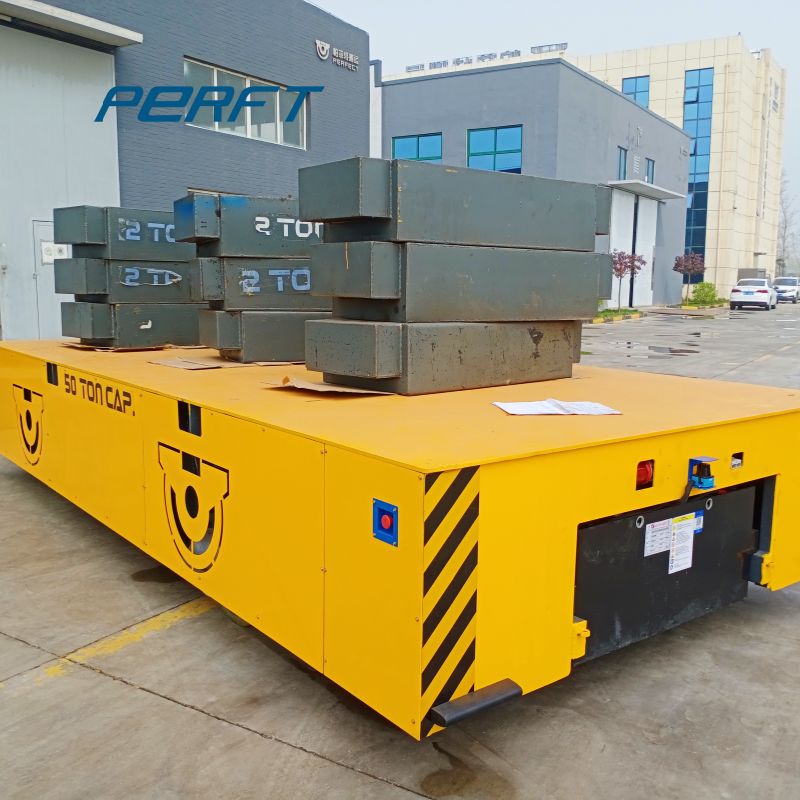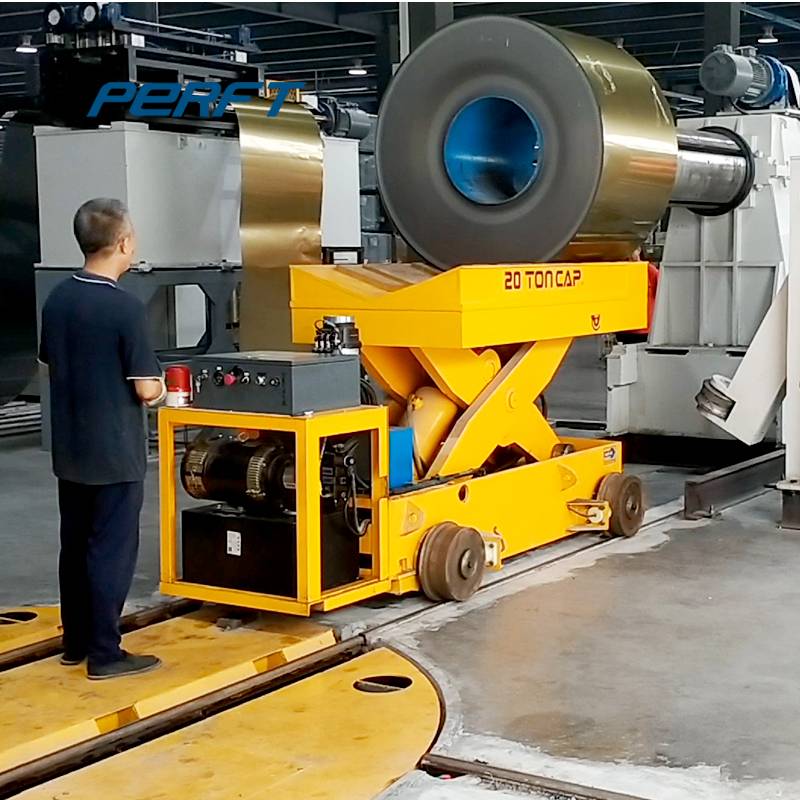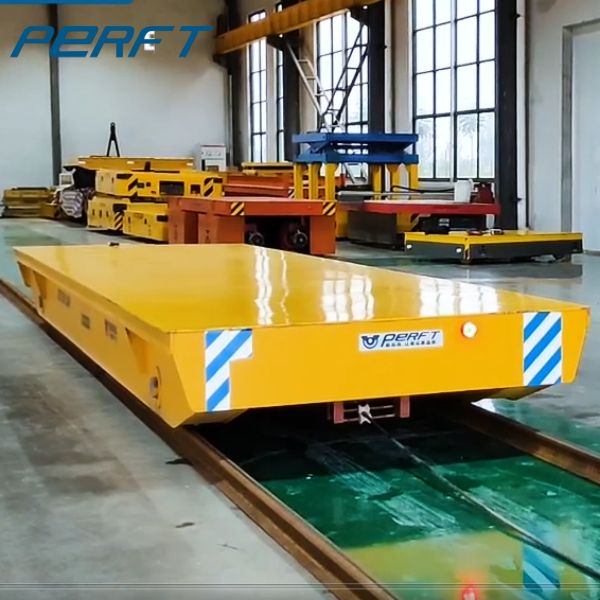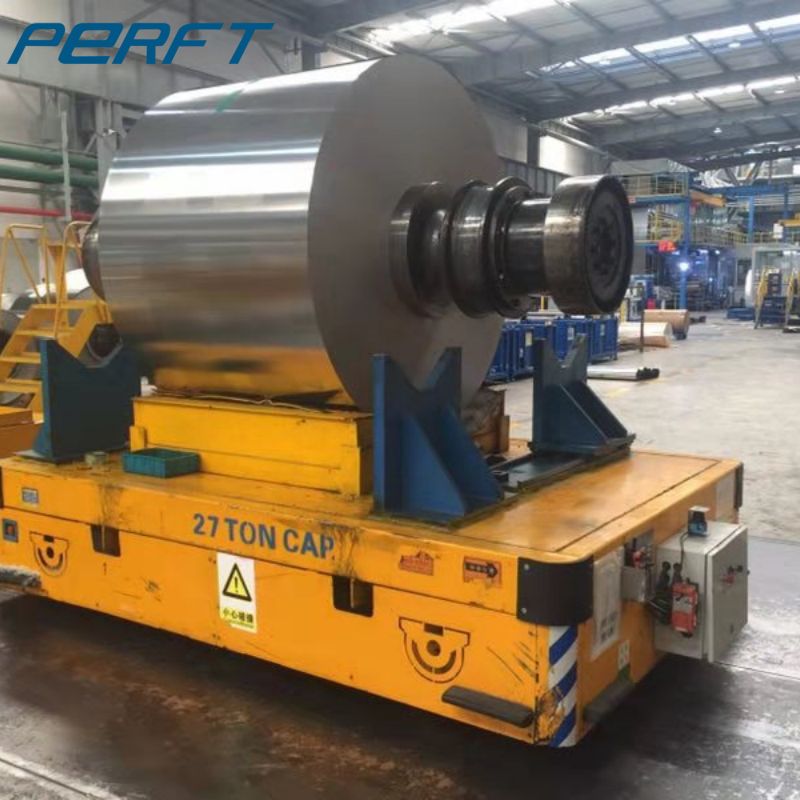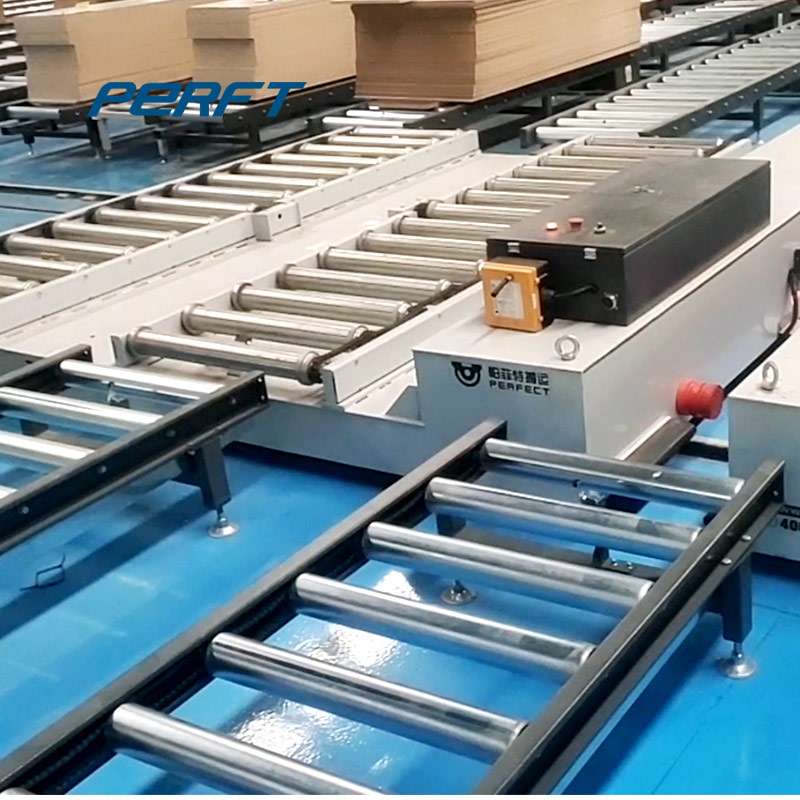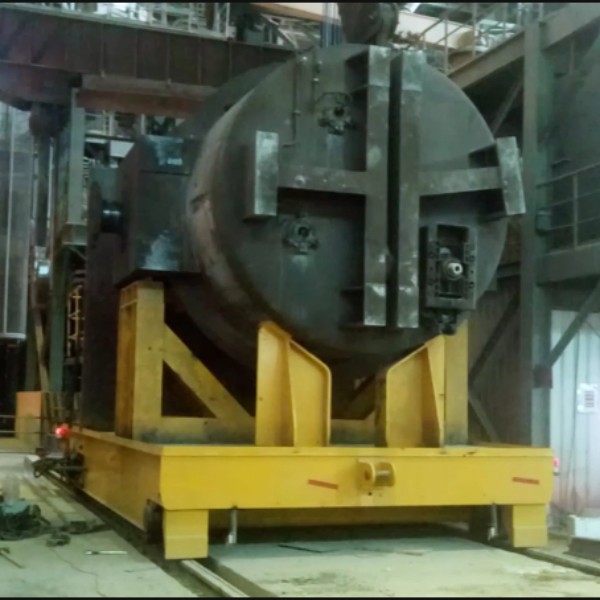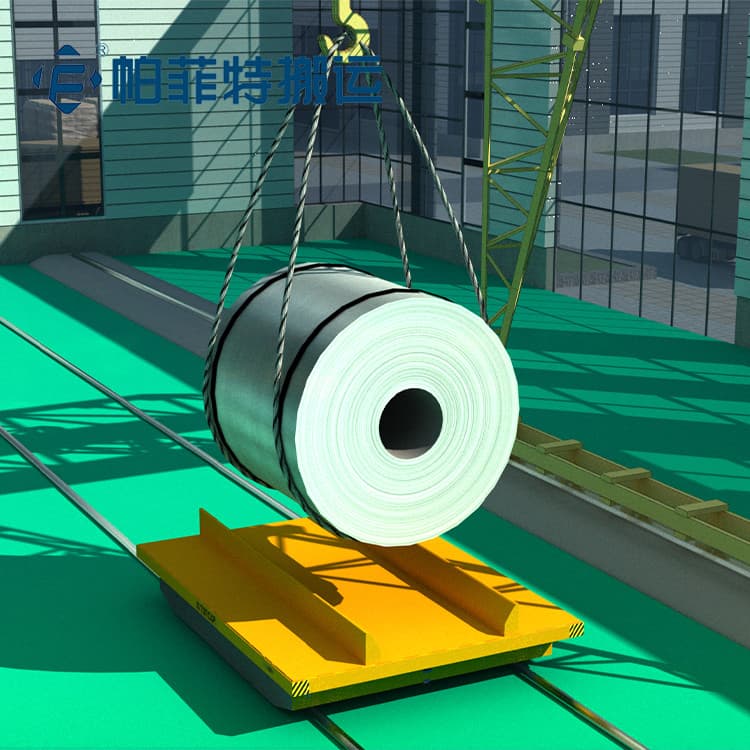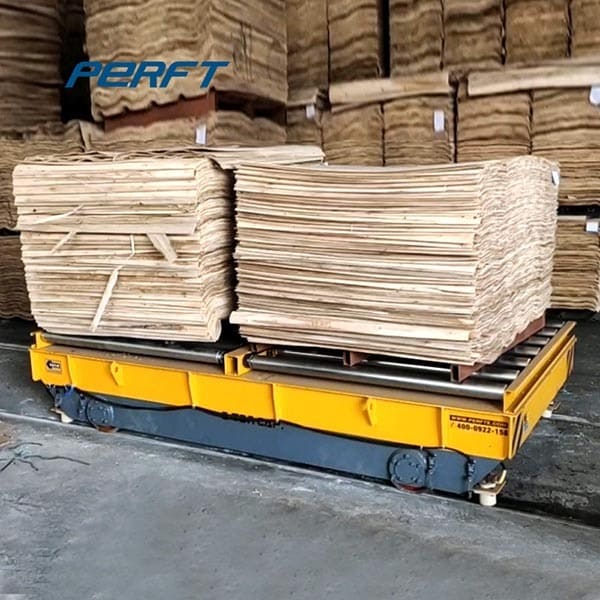Polyurethane Wheel Die Transfer Cart Delivered to USA
Features of Polyurethane Wheel Trackless Transfer Cart for the USA
- Manufacturer from China: Perfect
- Custom load capacity: 50 ton
- Power supply: Battery power
- Transfer trolley design: Trackless transfer cart
- Custom Tooling: Polyurethane rubber Wheel
- Control system: Button control and remote control
- Handling material: 50T Mold
- Note: Third purchase
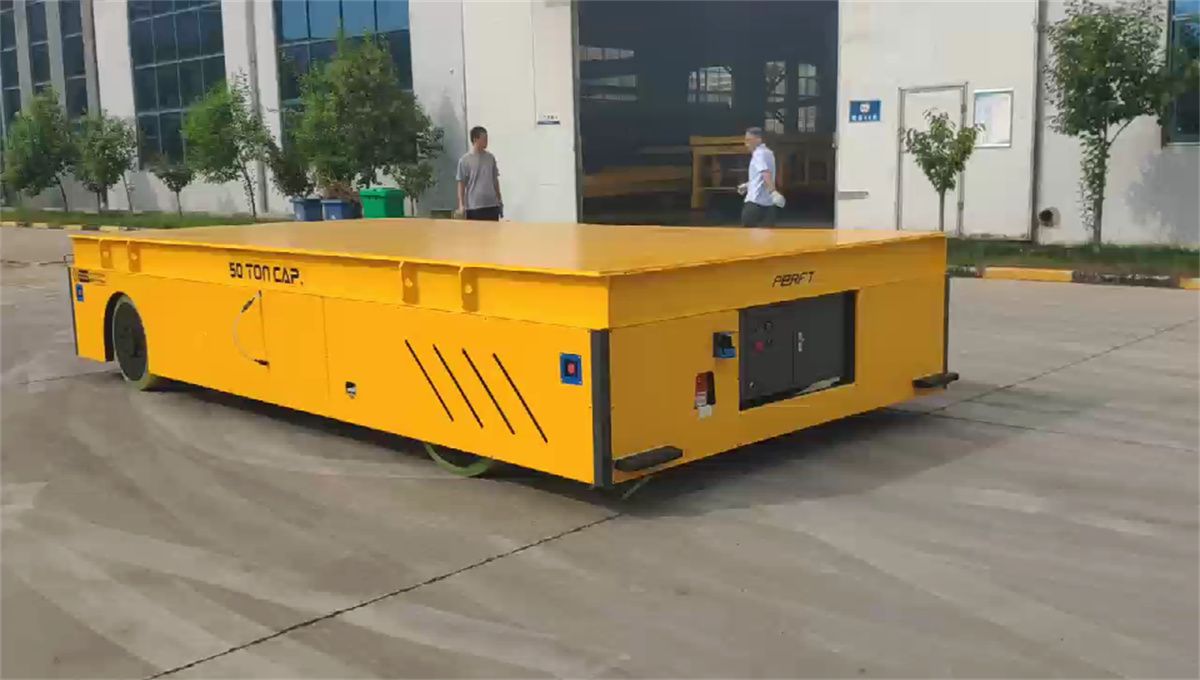
What is Polyurethane Wheel Trackless Transfer Cart
Polyurethane wheel trackless transfer cart is a type of material handling equipment used for transporting heavy loads within a facility or factory setting. It is designed to move without requiring a dedicated track or infrastructure, compared with rail transfer carts, providing flexibility in terms of the path it can take. Trackless transfer carts with polyurethane wheels are frequently utilized in industrial settings such as warehouses, distribution centers, and manufacturing plants where regular material transportation is necessary. Without the need for permanent infrastructure, they provide an effective and versatile way to move big loads, allowing for flexibility and adaptability to changing operational requirements. For a wider range of custom trackless transfer carts from Perfect Manufacturer, we recommend visiting the dedicated article on Trackless Transfer Carts.
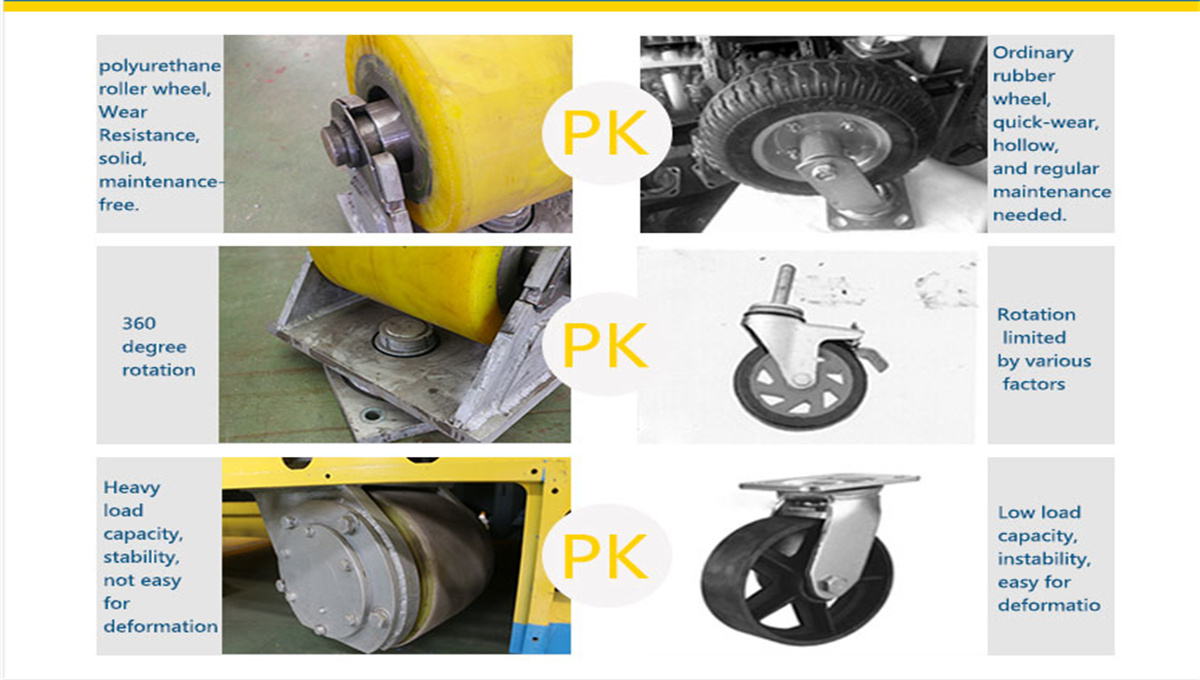
Polyurethane Wheel Trackless Transfer Cart for Die and Mold 50 Ton
Our customer is an auto parts manufacturer which has factories in India, Europe, and the United States. Transfer carts are used to transport 50-ton molds. This is the customer’s third purchase. They have purchased one delivered to an Indian factory and another one delivered to a German factory. They are all very satisfied with our heavy-duty transfer carts and our service. This time, a mold transfer cart of 50 tons was sent to the US factory for use.
Characteristics of a Polyurethane Wheel Trackless Transfer Cart
- Polyurethane wheels: For polyurethane wheels, which provide outstanding durability, wear-and-tear resistance, and load-bearing capability. The silent operation and versatility of polyurethane wheels allow them to be used on a variety of surfaces, such as uneven terrain, gravel, and concrete floors.
- Trackless design: Unlike traditional rail transfer carts that rely on fixed tracks or rails for movement, trackless transfer carts are self-propelled and can navigate freely. They use differential steering or other advanced control systems to change direction and maneuver around obstacles.
- Battery-powered: Electric transfer carts by battery power offer zero-emission operation, quiet operation, and precise control over speed and acceleration.
- Load capacity: These carts are designed to handle heavy loads, ranging from 1t to 500 tons. Load capacity can be customized by our customer’s needs.
- Customizable configurations: Polyurethane wheel trackless transfer carts come in various configurations, such as flatbeds, platforms, or specialized fixtures like cranes or lifts. The design can be customized to suit specific load requirements and operational needs.
- Safety features: To ensure safe operation, these carts are equipped with safety features such as emergency stop buttons, warning alarms, and safety sensors that detect obstacles or pedestrians in the path of the cart. Some models may also have automated braking systems or collision avoidance technology.
- Control systems: The transfer carts are typically controlled through a user-friendly interface, such as a pendant control or a wireless remote control. Advanced models may also feature programmable logic controllers (PLCs) for automated operations, integration with other equipment, or connectivity to factory management systems.
Maintenance Requirements for Polyurethane Wheels on Transfer Carts
- Regular cleaning: To avoid accumulating dirt, debris, or other materials that could impair their function, the wheels should be cleaned on a frequent basis. To clean the wheels, use a soapy water solution or mild detergent; do not use harsh chemicals as they could harm the polyurethane substance.
- Inspection for Damage: Examine the polyurethane wheels on a regular basis for indications of damage, such as chips, cracks, or excessive wear. Wheel damage should be repaired right away to avoid more problems and guarantee safe functioning.
- Lubrication: The wheel bearings on some transfer carts might need to be lubricated. To find out the right lubrication schedule and type of lubricant to use, consult the manufacturer’s instructions. Friction is decreased and smooth wheel movement is maintained with proper lubrication.
- Load distribution: Distribution of the load: Ascertain that each wheel of the transfer cart has an equal amount of weight on it. Uneven loads might put too much strain on some wheels, causing failure or early wear. Observe the manufacturer’s recommended load capacity.
- Avoid overloading: Don’t put more weight on the transfer cart than is advised. Overloading can increase wear and create safety risks by placing undue strain on the wheels and other parts.
- Surface conditions: Pay attention to the surface where the transfer cart is being used. Uneven or rough terrain might cause the wheels to wear down more quickly. To reduce probable wheel damage, make an effort to keep the cart’s tracks clear of obstacles and smooth.
- Storage considerations: To prevent moisture, chemicals, or extremely high or low temperatures from damaging the polyurethane material on the wheels, store the transfer cart in a clean, dry place when not in use.
If you also need one polyurethane wheel transfer cart that aligns with your requirements and provides reliable and high-quality products. You can also trust us like our customers, tell us what material are you going to transport, how much load capacity is and what custom needs, talk about design sketch, and deal with design details. Today contact us for your transfer carts. At Perfect, you can also get more heavy load transfer carts, for details and parameters, you can also read another article about Industrial Transfer Carts For Material Handling.
